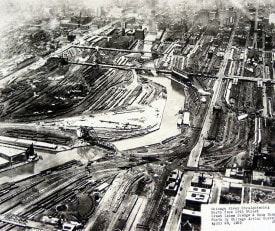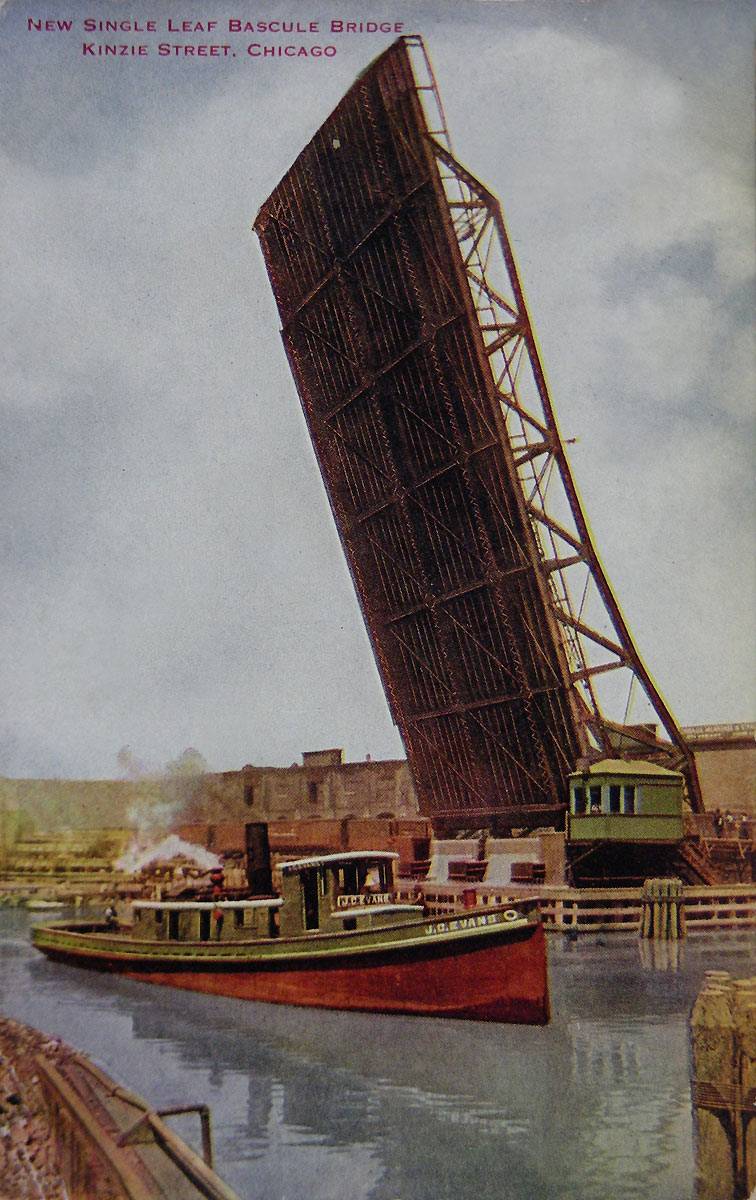THE VITALITY OF MARITIME COMMERCE- "THE BUSIEST SMALL RIVER IN THE WORLD."
The city's strategic location is important to Chicago's rich maritime history. Chicago grew from a portage for fur traders into one of the world's leading ports for lumber and grain Connecting the Great Lakes to the Mississippi River system via the Illinois & Michiagan (I&M) Canal in 1848 was key to early trading and to today's more substantial commerce. The history of commercial boating is seen in the development of vessels from the canoe to larger wooden boats, schooners, and ultimately steel ships driven by paddlewheel and then steam.
To alleviate growing congestion on the Chicago River, a deep-water port was built 20 miles south of Chicago at Lake Calumet. In 1869, the U.S. Army Corp of Engineers first began to transform e the Calumet River into an effective harbor. George Pullman’s decision to locate his model town and car works near Lake Calumet and the giant North Chicago Rolling Mill’s move to the mouth of the Calumet River, signaled the emergence of the region as an industrial center. The permanent reversal of the Chicago River in 1900 encouraged additional growth of the area's waterways and rivers commerce. By 1906, 200-foot-long schooners gave way to 600-foot-long steel-hulled ships. Today, maritime commerce continues to be a vital part of the regional economy.
To alleviate growing congestion on the Chicago River, a deep-water port was built 20 miles south of Chicago at Lake Calumet. In 1869, the U.S. Army Corp of Engineers first began to transform e the Calumet River into an effective harbor. George Pullman’s decision to locate his model town and car works near Lake Calumet and the giant North Chicago Rolling Mill’s move to the mouth of the Calumet River, signaled the emergence of the region as an industrial center. The permanent reversal of the Chicago River in 1900 encouraged additional growth of the area's waterways and rivers commerce. By 1906, 200-foot-long schooners gave way to 600-foot-long steel-hulled ships. Today, maritime commerce continues to be a vital part of the regional economy.
Chicago Maritime Museum is a 501(C)(3) Nonprofit registered in the US under Tax ID 36-3205719
Chicago Maritime Museum®. Registered in U.S. Patent and Trademark Office
Chicago Maritime Museum
1200 W 35th St
Chicago, IL 60609
(773) 376-1982
1200 W 35th St
Chicago, IL 60609
(773) 376-1982
















